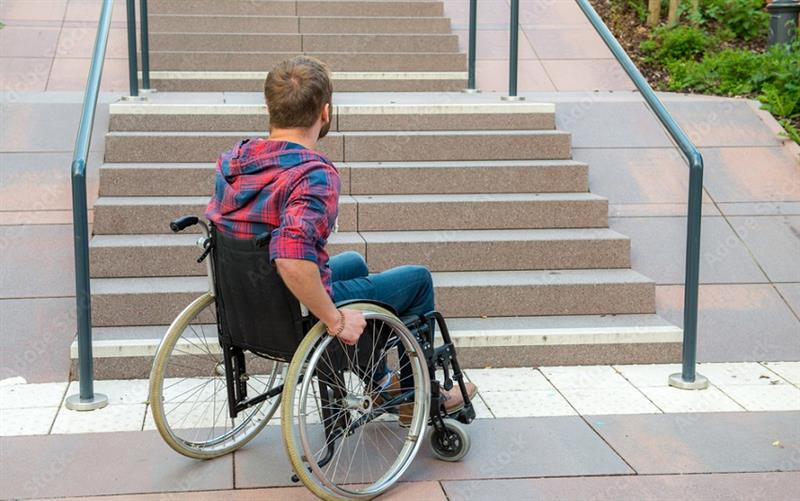
One common kind of assistive technology is rigid manual wheelchairs. Depending on your needs and level of functional ability, there are now hundreds to pick from because they have developed over time. If you are an active user, it is likely that you currently use or have previously been advised to use a rigid wheelchair.
Active users typically use rigid wheelchairs. Due to its reputation for speed and agility, you will frequently see them being used by athletes. In the world of sports chairs, even grams matter, thus the user frequently tries to cut as much weight as feasible here!
What is a rigid chair?
That's exactly what it is: RIGID. They often don't fold, have less flexibility, and maintain their shape. They have less moving parts overall, such as the flip-away footrests, retractable side guards, and folding cross braces. This also makes them stronger and lighter, which is beneficial for people who are active and necessitates fewer repairs and upkeep.
What are the top 5 benefits of a rigid wheelchair then?
1. Perfectly Designed And Built To Fit The User
It is not possible to buy rigid wheelchairs "out of the box." It is necessary to assess the user's functional needs, competencies, and seating needs. The dimensions of rigid wheelchairs can be chosen to best assist the user, including seat height, depths and widths, the center of gravity, the wheels, backrests, and cushions. Allowing for potential functional modifications is one way to do this. Additionally, there are many attractive custom options available.
2. Weightless
Wheelchair Rogue Greater MobilityPeople occasionally inquire as to why having a lightweight wheelchair is crucial for someone using a self-propelled wheelchair. There are various reasons, but the main one is to keep the person's shoulders and arms as strong and functional as possible for as long as feasible. A heavier chair puts extra strain on the user's rotator cuffs because a human's arms were not intended to perform the tasks that our legs are meant to perform.
The strength and stress absorption of the chair can vary depending on the material used for the frame. A producer can utilize less of a material with a higher strength to weight ratio, resulting in a lighter final product. A rigid wheelchair's frame can be constructed from lightweight aluminum, titanium, or carbon fiber. Each of these materials has advantages that range from strength and durability to bump absorption.
There is no right or incorrect material to select; it all depends on the demands and abilities of the user in terms of their functional needs and lifestyle requirements. For instance, a typical user could select carbon fiber because of its reputation for being lightweight. While a customer seeking a sports chair would go for titanium due to its marginally improved bump absorption properties. These days, a lightweight chair's bare frame might be sub 5 kg.
A rigid wheelchair's axle position is frequently fixed permanently for a long-term user with no functional changes anticipated; this can reduce weight by employing fewer parts.
3. Decreased Energy Spend
The aforementioned elements give the user a lightweight chair that is designed to support their needs and functional ability. Overall, this enhances the user's ability to turn and achieve ideal propulsion. The user's needed energy expenditure will be reduced by a rigid wheelchair with the aforementioned attributes. While the frame of a folding chair can twist or distort when you first "push" it, absorbing part of the force. Therefore, we may anticipate that someone who uses a chair that is simple to push and navigate will have more energy and endurance throughout the course of the day.
4. Strong Charis Are Rigid Chairs
All of us have witnessed well-used chairs with swing-away leg rests that have been bent and remain in that position. The frame integrity is far better and lasts much longer when "closing the loop" and using a solid (rather than swing away) front. For instance, a rigid wheelchair has a permanent front frame that prevents warping and twisting of the pieces, but a manual folding chair has removable legrests. The chair's durability is increased by having fewer replaceable parts, which enhances function overall and requires less repairs and upkeep. Active users can travel off-road without worrying about any parts coming free because to a robust frame.
5. Compact
Since rigid wheelchairs cannot be folded like "traditional" wheelchairs, they are not typically renowned for being portable. The Ottobock Zenit is an excellent illustration of how certain inflexible chairs are now just as portable as a folding chair.
The boot of a person's automobile can accommodate a rigid wheelchair with fast release wheels and a folding back just as readily as a folding wheelchair. The quick release wheels may be taken off and placed in the back seat of a number of very light, rigid chairs that have limited "under frame" and are made to be slid over the driver's lap into the vehicle. A person with a disability can keep complete independence while using this design element.